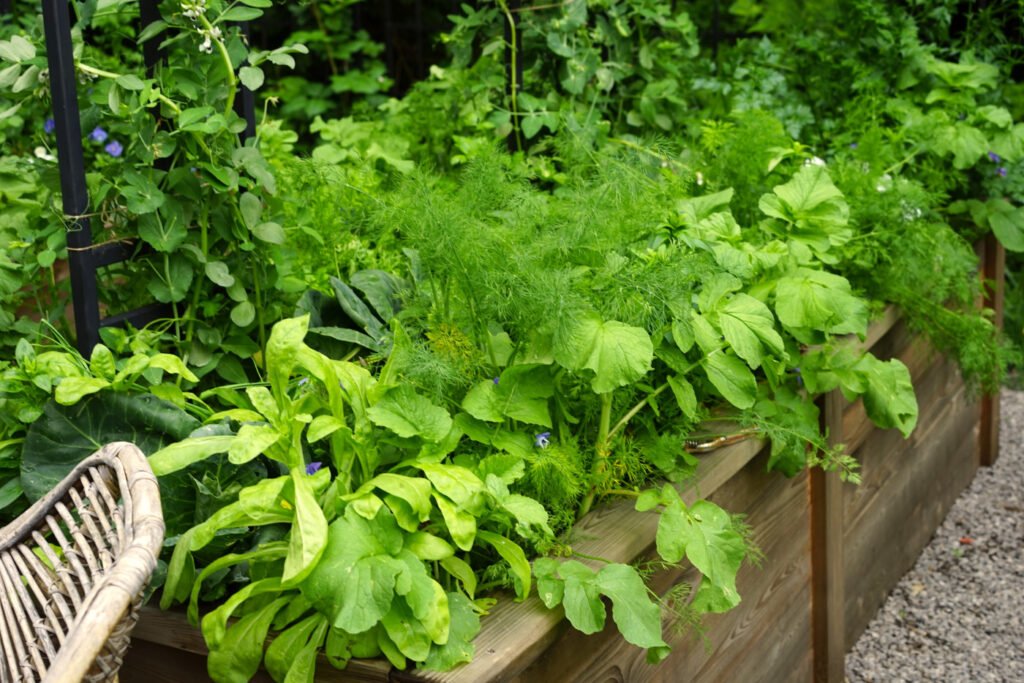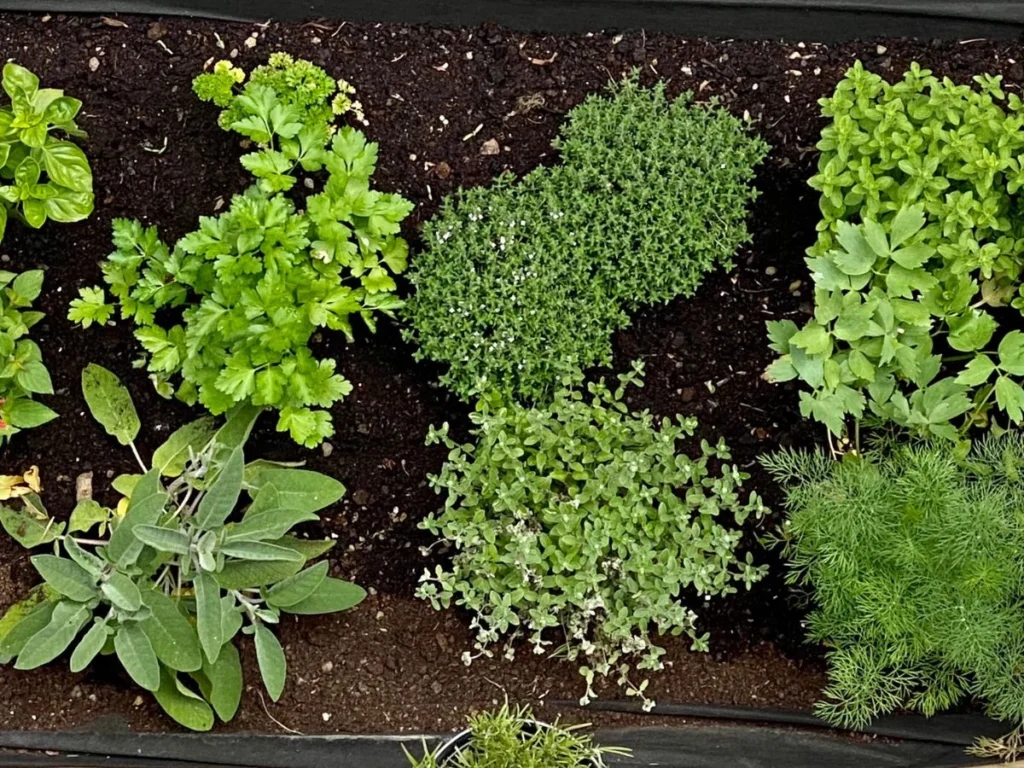September is a month of transition in the garden. While many summer crops begin to fade, the cooler temperatures and shorter days create the perfect environment for herbs that thrive in fall and can keep producing throughout the winter. By planting the right herbs now, you’ll enjoy fresh, homegrown flavors for months to come—long after outdoor gardens have gone dormant.
Herbs are among the easiest plants to grow, and most adapt beautifully to containers, windowsills, or small raised beds. Whether you’re an experienced gardener or just starting out, September planting ensures a steady supply of aromatic herbs to enhance soups, teas, roasts, and holiday meals.
In this guide, we’ll look at five must-plant herbs for September that will reward you with fresh flavors all winter.
Why Plant Herbs in September?

Planting herbs in September offers several benefits:
- Cool-season growth: Many herbs prefer moderate temperatures and will thrive in fall.
- Fewer pests: With summer heat gone, pest activity decreases, giving your plants a healthier start.
- Indoor adaptability: Many herbs can easily transition indoors when frost arrives.
- Winter harvest: Fresh herbs at your fingertips mean you’ll spend less on store-bought bundles that often wilt quickly.
1. Parsley (Petroselinum crispum)

Parsley is a versatile herb that adds freshness to a wide variety of dishes, from soups and salads to roasted meats. Planting parsley in September allows it to establish before frost and continue growing slowly through the winter months.
Why Parsley?
- Rich in vitamins A, C, and K.
- Works as both garnish and a main ingredient in recipes like tabbouleh or chimichurri.
- Hardy enough to handle cooler temperatures.
Planting Tips:
- Location: Parsley prefers full sun but will tolerate partial shade, especially indoors.
- Soil: Loose, well-drained soil enriched with compost.
- Watering: Keep soil evenly moist, but avoid overwatering.
- Container Growing: A deep pot (at least 8 inches) supports its taproot.
Winter Care:
Bring parsley pots indoors when frost approaches, placing them on a sunny windowsill. It grows slower in winter, but frequent trimming will encourage new shoots.
2. Chives (Allium schoenoprasum)

Chives are among the easiest herbs to grow and maintain. Their delicate onion-like flavor makes them perfect for baked potatoes, omelets, and creamy soups.
Why Chives?
- Perennial herb—plant once, and it will return each year.
- Compact growth makes it perfect for pots or windowsills.
- Produces lovely purple flowers in spring, which are also edible.
Planting Tips:
- Location: Chives thrive in full sun but can tolerate some shade.
- Soil: Moist, rich soil with good drainage.
- Watering: Water regularly, keeping soil damp but not soggy.
- Spacing: If planting in garden beds, leave 6 inches between clumps.
Winter Care:
Chives go dormant outdoors in very cold regions, but indoor containers allow year-round harvest. Trim the leaves regularly, and don’t cut too close to the base to ensure regrowth.
3. Cilantro (Coriandrum sativum)

Cilantro (also known as coriander) is a cool-season herb that flourishes when temperatures drop. While it bolts quickly in summer heat, September planting ensures slow, steady growth.
Why Cilantro?
- Essential for salsas, curries, and garnishes.
- Rich in antioxidants and vitamin K.
- Seeds (coriander) can also be harvested for spice blends.
Planting Tips:
- Location: Cilantro thrives in full sun to partial shade.
- Soil: Well-drained, fertile soil.
- Watering: Keep soil consistently moist for tender leaves.
- Container Growing: Shallow-rooted, so medium-sized pots work fine.
Winter Care:
Grow cilantro in containers indoors under bright light. Since it grows quickly, stagger planting every 2–3 weeks for a continuous supply through winter.
4. Thyme (Thymus vulgaris)

Thyme is a hardy perennial that adds earthy, savory flavor to roasted vegetables, stews, poultry, and marinades. Its low-maintenance nature makes it an ideal herb for beginner gardeners.
Why Thyme?
- Excellent companion herb for rosemary and sage in fall cooking.
- Evergreen foliage adds greenery year-round.
- Naturally pest-resistant and drought-tolerant.
Planting Tips:
- Location: Prefers full sun.
- Soil: Sandy or well-drained soil; avoid heavy clay.
- Watering: Water sparingly—thyme dislikes soggy conditions.
- Container Growing: Choose a wide, shallow pot to accommodate its spreading habit.
Winter Care:
Indoors, thyme does well on sunny windowsills. Outdoors, cover with mulch in cold climates to protect roots. Frequent trimming encourages bushier growth.
5. Mint (Mentha spp.)
Mint is one of the most rewarding herbs to grow, offering refreshing flavor for teas, desserts, cocktails, and savory dishes. September planting allows mint to establish strong roots before winter.
Why Mint?
- Vigorous grower that thrives in containers.
- Adds freshness to beverages and culinary creations.
- Aromatic leaves provide a soothing fragrance indoors.
Planting Tips:
- Location: Prefers partial shade to full sun.
- Soil: Moist, nutrient-rich soil.
- Watering: Mint loves consistent moisture.
- Container Growing: Always plant mint in pots, as it spreads aggressively in garden beds.
Winter Care:
Mint adapts well to indoor growing. Keep it near a bright window, and snip leaves as needed. Regular pruning prevents legginess and promotes lush foliage.
Tips for Maximizing Your Winter Herb Harvest
- Use Containers: Plant herbs in pots that can be moved indoors once temperatures drop.
- Provide Adequate Light: Herbs need 6–8 hours of sunlight daily. If natural light is limited, consider using a grow light.
- Rotate Plants: Turn containers regularly so herbs receive even light exposure.
- Harvest Smartly: Avoid cutting more than one-third of a plant at a time to keep it healthy and productive.
- Fertilize Sparingly: Use a diluted liquid fertilizer once a month to keep growth steady without overwhelming the plants.
How These Herbs Enhance Your Winter Cooking
- Parsley: Brightens soups, stews, and winter roasts.
- Chives: Adds mild onion flavor to mashed potatoes, omelets, and dips.
- Cilantro: Perfect for curries, tacos, and warming broths.
- Thyme: Complements hearty meats, casseroles, and root vegetables.
- Mint: Refreshes hot teas, desserts, and festive holiday drinks.
Conclusion
Planting herbs in September is a simple yet rewarding way to extend your gardening season and enjoy fresh flavors all winter long. With parsley, chives, cilantro, thyme, and mint, you’ll have a versatile collection of herbs ready to elevate everything from weekday meals to holiday feasts.
By taking advantage of the cooler season, setting up containers, and bringing them indoors before frost, you can create a thriving indoor herb garden that will supply fresh greens even in the coldest months.
This September, give yourself the gift of a flavorful winter by planting these five essential herbs—you’ll be glad you did when you’re sipping mint tea by the window or sprinkling fresh thyme over a hearty stew.
